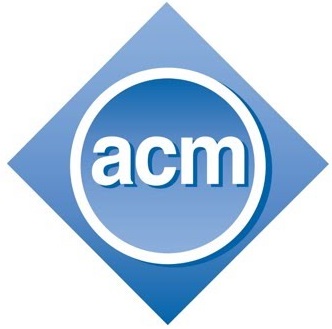Aims and Topics
The Objective of the Software Engineering (SE) Track is to provide an open forum for discussing a wide range of experiences and ideas for developing high-quality software applications more effectively and efficiently. The SE track examines both macroscopic and microscopic aspects of in-depth theories, tools, and practices in the field of software engineering. It provides a platform for academic researchers and industry practitioners to seek collaboration opportunities, and identify the state-of-art technologies, which are vital to the software engineering community.
- Architecture, Framework, and Design Patterns
- Requirements Engineering
- Process, Standards, and Project Management
- Software Maintenance and Evolution
- Software Testing and Verification
- Mining Software Repositories
- Quality Assurance and Management
- Verification, Validation, Testing, and Analysis
- Safety, Security, Privacy, and Risk management
- Dependability and Reliability
- Fault Tolerance and Availability
- Metrics and Measurement
- Formal Methods and Theories
- Aspect-Oriented Software Development and Design
- Component-Based Development and Reuse
- Empirical Studies, Benchmarking, and Industrial Best Practices
- Pervasive, Ubiquitous, Smart Service-Oriented Computing
- Search-based Software Engineering
- Applications and Tools
Important Dates
-
September 20, 2024 (EST): Paper Submission DueExtended to October 4, 2024 (EST)Extended to October 13, 2024 (EST)
We would like to inform you that the paper submission deadline has been extended to October 13th. Please note that this is the final extension, and no further extensions will be granted. -
October 30, 2024: Paper Author Notification Extended to November 22, 2024 (Tentative)
Please note that the notification of paper acceptance or rejection has been tentatively extended to November 22nd, 2024. -
November 29, 2024: Camera-ready Copy Submission Due Extended to December 13, 2024
Please note that the camera-ready copy submission deadline has been extended to December 13th, 2024.
Paper Submission & Selection
Research papers and experience reports related to the above topics are solicited. Submissions must not have been published or be concurrently considered for publication elsewhere. Papers should be submitted in the PDF format using the ACM-SAC proceedings format via the EasyChair submission system. Each submission will be reviewed in a double-blind process according to the ACM-SAC Regulations. To facilitate blind review, author’s names and affiliations should be entered separately at the submission site and must NOT appear in any part of the paper including title, paper body, references, and any self-reference should be in the third person.
Paper selection is based on the originality, technical contribution, presentation quality, and relevance to the SE Track. Upon paper acceptance, prospective authors must provide a camera-ready version which takes into account the review comments. The conference proceedings will be published by ACM and also available online through the ACM Digital Library.
Note that we don’t have any separate review category for poster papers. Therefore, all submissions will be reviewed as regular papers. Papers that received high reviews but were not accepted as regular papers can be invited for the poster session. If the invited authors accept our invitation, their camera-ready paper should be re-formatted as a short (poster) paper.
We have received numerous inquiries regarding formatting guidelines for Regular, Poster, and SRC submissions. Please refer to the Author Kit below for detailed instructions on how to prepare your manuscript: Author Kit
Paper registration is required, allowing the inclusion of the regular paper/poster paper in the conference proceedings. An author or a proxy attending SAC MUST present the paper. This is a requirement for the paper/poster to be included in the ACM digital library. No-show of registered papers and posters will result in excluding them from the ACM digital library.
Note for Accepted Papers
- The length of each regular paper is 8 pages with the option for up to 2 additional pages.
- The length of each poster paper is 2 pages with the option for up to 1 additional page.
- The length of each SRC abstract is 2 pages, no additional pages.
Student Research Abstracts Competition (SRC)
Graduate students are invited to submit research abstracts following the instructions published at SAC 2025 SRC website through the EasyChair SRC Submission System.
Track Co-Chairs
Program Committee
- Andrew Simpson, University of Oxford, United Kingdom
- In-Young Ko, Korea Advanced Institute of Science and Technology, South Korea
- Yi Song, Wuhan University, China
- Linzhang Wang, Nanjing University, China
- Mehmet Aksit, University of Twente, Netherlands
- Ana-Maria Oprescu, University of Amsterdam, Netherlands
- Markus Roggenbach, Swansea University, United Kingdom
- Horst Lichter, RWTH Aachen University, Germany
- Hiroaki Fukuda, Shibaura Institute of Technology, Japan
- Tadashi Dohi, Hiroshima University, Japan
- Shin Nakajima, National Institute of Informatics, Japan
- Chih-Hung Chang, Providence University, Taiwan
- Hasan Sozer, Ozyegin University, Turkey
- Yi Liu, University of North Carolina Wilmington, USA
- Hyunsook Do, University of North Texas, USA
- Md Rakibul Islam, Lamar University, USA
- Misoo Kim, Chonnam National University, South Korea
- Jung-Won Lee, Ajou University, South Korea
- Rubing Huang, Macau University of Science and Technology, Macau
- Gerson Sunyé, Université de Nantes, France
- Arnaud Blouin, INSA Rennes, France
- Richard Lipka, University of West Bohemia, Czech Republic
- Clemens Grelck, Friedrich Schiller University Jena, Germany
- Sandro Morasca, Università degli Studi dell'Insubria, Italy
- Maurizio Leotta, Università di Genova, Italy
- Auri Marcelo Rizzo Vincenzi, Universidade Federal de São Carlos, Brazil
- Humberto T. Marques-Neto, PUC Minas, Brazil
- Kecia Ferreira, Federal Center for Technological Education of Minas Gerais, Brazil
- Alejandra Cechich, Universidad del Comahue, Argentina
General Inquiries
For further information, please visit SAC SE Track CFP and SAC 2025 conference website, or feel free to contact the Track Co-Chair, Geunseok Yang, HanKyong National University, Korea.
